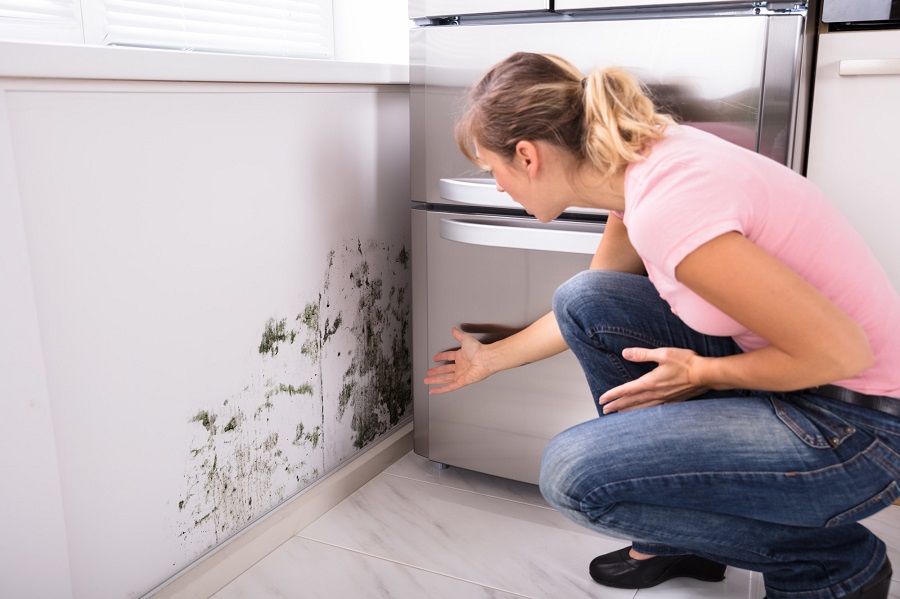In 2005, a broad international consensus was reached and it determined that mold is a public health hazard. Although most people are not aware of it, mold may represent serious health issues in your family. It can come in numerous places and not just under the sink, on the shower curtain or in the basement.
Black mold can be found on the roof, in drywall and on the objects inside the bathroom. In fact, it can also be found on your newly bought Christmas tree. According to studies, trees can also be breeders of mold. This mold can cause winter allergies by emitting millions of spores into a room.
In the two weeks that the Christmas tree was kept in the house, the quality of air in that home reduced significantly.
There can be a thousand types of mold and it is often classified according to the effects it has on the people and other living beings within the home. Have you been exposed to toxic black mold? How can you tell if you have?
Read on to learn the top signs you have been exposed to toxic black mold.

What Is Toxic Black Mold?
Before you start looking for symptoms of black mold infestation, you need to know what black mold is and how it can affect your life. Black mold is a type of fungus that is black, and sometimes green. It is often a distinct damp or musty substance with a mildew smell.
It can also be part of several species of fungus that have toxins in them. In many cases, it will grow in surfaces that have cellulose. These surfaces include paper, fiberboard, gypsum, and wood. In many cases, it will grow in damp and warm areas. It can also grow anywhere else that the conditions are right.
While it will grow in laundry rooms, bathrooms and shower cubicles, it will also follow flooding and busted pipes.
They are not dangerous themselves; however, the fungus in them does release harmful toxins into the environment. Inhaling these toxins can lead to various health effects that can be fatal. People who have weakened immune systems and lung diseases, they have a higher risk of experiencing these effects.
What Is Black Mold Poisoning?
Black mold falls under the category of toxigenic molds. It creates mycotoxins that are a danger to the health of individuals. When inhaled, touches or consumed, it is quickly absorbed into the body and causes serious harm.
Most of the symptoms that occur when you inhale black mold are similar to those that come when you have an upper respiratory tract infection like the common cold. If you have lung diseases, these symptoms will be much more fatal for you.
Most common symptoms of black mold:
- Wheezing
- Coughing
- Blocked nose
- Red eyes
- Runny nose
- Itchy eyes
- Nose bleeding
- Itchy and sore throat
If you have some other respiratory conditions, these symptoms will worsen other respiratory conditions. For instance, if you have asthma, the mold could worsen the allergies and make the condition even worse. Here are some of the symptoms you will notice:
- Headaches
- Persistent coughing
- Frequent chest colds
- Allergic reactions
- Difficulty breathing
- General fatigue and lethargy
- Inflammation of the sinuses
Long term exposure to toxic black mold can lead to:
- Light sensitivity
- Anxiety
- General cramps
- Memory loss
- Trouble concentrating
- Unexplained weight gain
- Nerve problems like numbness of the limbs
At Risk Groups
Some people are at a higher risk of developing these symptoms than others. If you fall into this category of people, you are likely to have more severe and frequent symptoms than other people.
- If you suffer from seasonal allergies and specifically hay fever
- Have mold allergies
- Are asthmatic
- Suffer from chronic obstructive pulmonary disease
The symptoms of black mold can be more serious in children. The Center for Disease Control and Prevention (CDC) has done research on this and suggests that young children who inhale toxic mold in the first years of the lives are more likely to develop asthma. This risk is even higher for kids from families that have a history of asthma.
If you have respiratory diseases, it is important that you treat and get rid of the mold early. Long term exposure could be potentially harmful to your health. However, unlike what the information on the internet says, short term exposure is not as serious.
For symptoms to develop, you need constant and consistent exposure to black mold for these symptoms to develop.
You or your loved one may be exposed to these causative agents without your consent. It’s important to hire chemical and toxic exposure trial lawyers to handle your claim. For the best trial lawyer, you can read more here.
Diagnosis
The main symptoms that doctors look for when treating for toxic mold poisoning are the respiratory disorders it causes. However, most of these symptoms mimic viral diseases like the common cold. If the doctor suspects that you have mold poisoning, they may order a test that will check the levels of mold in your home.
The doctor may also recommend that you get blood tests and allergy tests are done to determine whether your condition is mold related. With the blood test, they will only take a small sample of the blood for lab analysis.
In this test, they will check for the presence of antibodies in the immune systems and it will produce a response on the mold toxin. The doctor may also choose to look for the mold toxin themselves.
The standard method of checking for toxins is a skin prick which will help the doctor know if you are allergic to mold. Once the skin is pricked, they will drop a liquid with mold into the pricked part.
If a person is allergic, the skin will turn red, they will have an itchy and red rash. This will develop almost immediately.
People with Toxic Black Mold Allergies Are More Prone to Conditions That Affect the Immune Are Respiratory Systems.
You can always treat toxic black mold by making sure the indoor humidity is low and that all areas in your home are clean. Keep a watchful eye for small growths and do something about them.
Read our blog for more advice on healthy living, lifestyle, and fashion and beauty.

